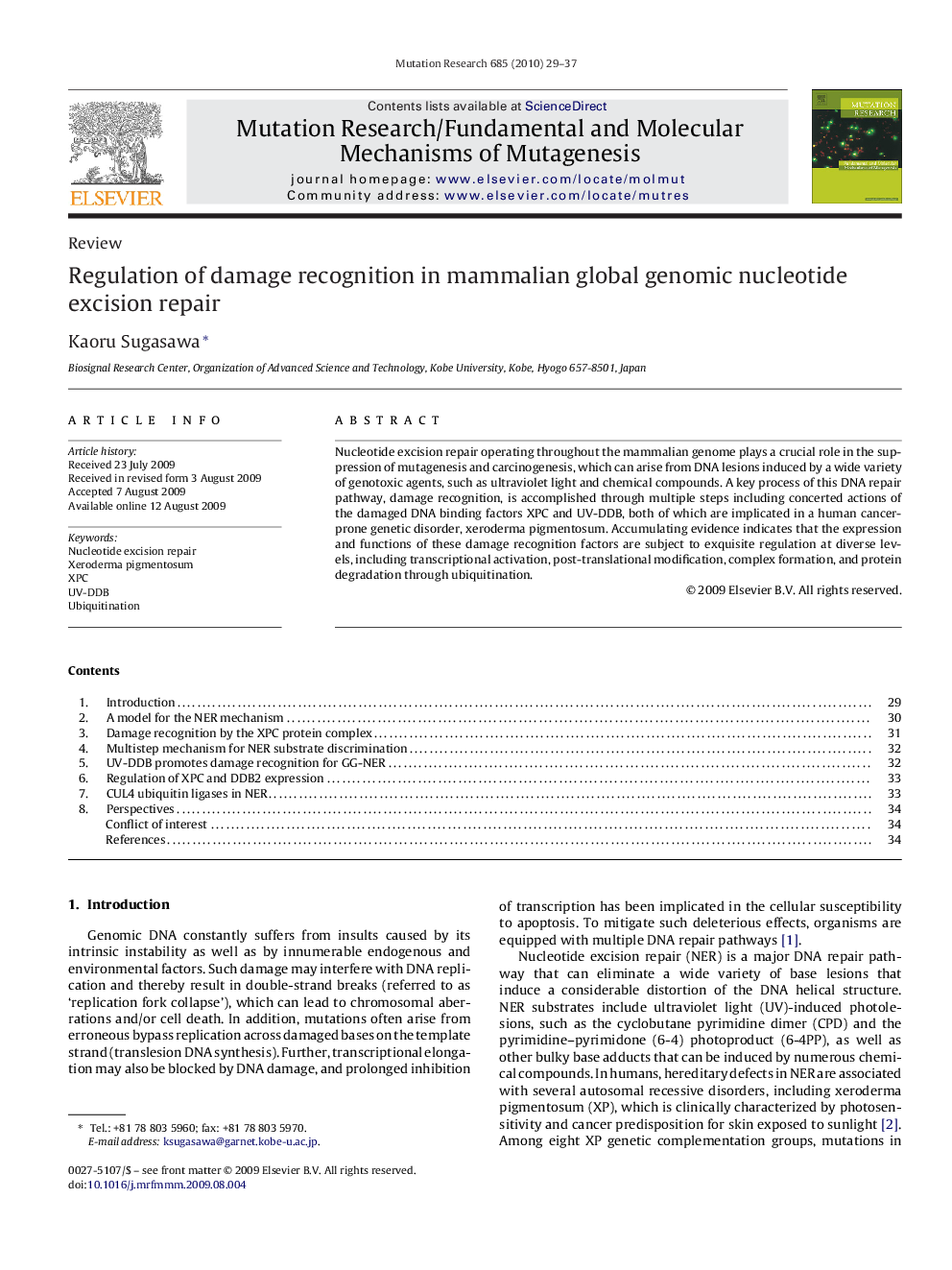| Article ID | Journal | Published Year | Pages | File Type |
|---|---|---|---|---|
| 2146755 | Mutation Research/Fundamental and Molecular Mechanisms of Mutagenesis | 2010 | 9 Pages |
Nucleotide excision repair operating throughout the mammalian genome plays a crucial role in the suppression of mutagenesis and carcinogenesis, which can arise from DNA lesions induced by a wide variety of genotoxic agents, such as ultraviolet light and chemical compounds. A key process of this DNA repair pathway, damage recognition, is accomplished through multiple steps including concerted actions of the damaged DNA binding factors XPC and UV-DDB, both of which are implicated in a human cancer-prone genetic disorder, xeroderma pigmentosum. Accumulating evidence indicates that the expression and functions of these damage recognition factors are subject to exquisite regulation at diverse levels, including transcriptional activation, post-translational modification, complex formation, and protein degradation through ubiquitination.
